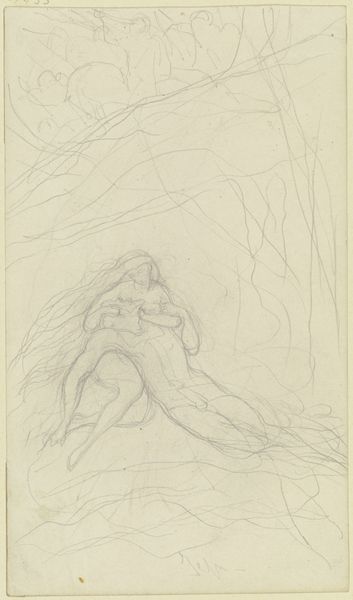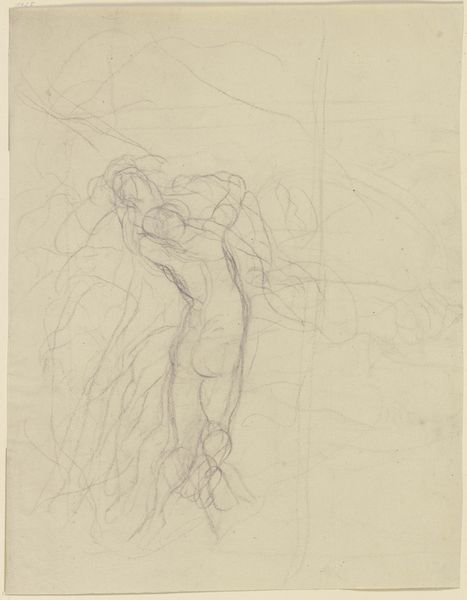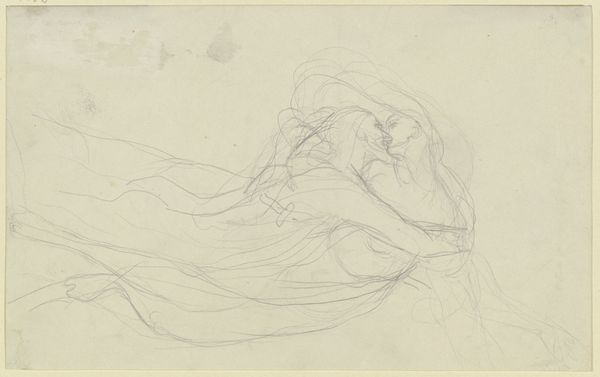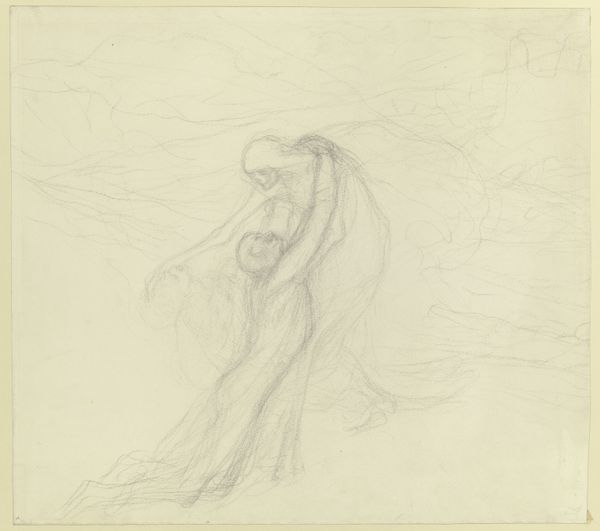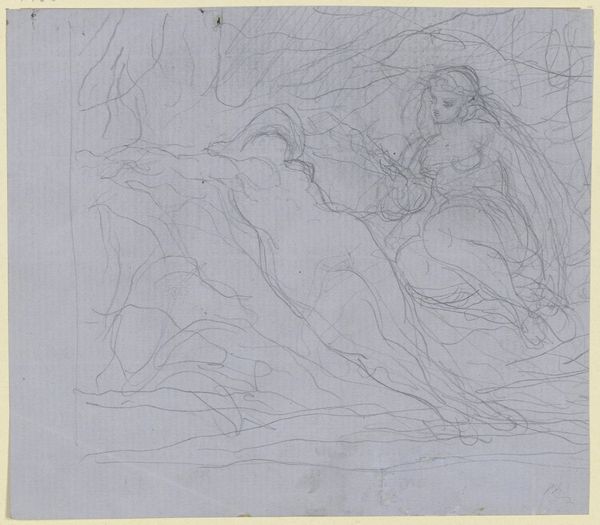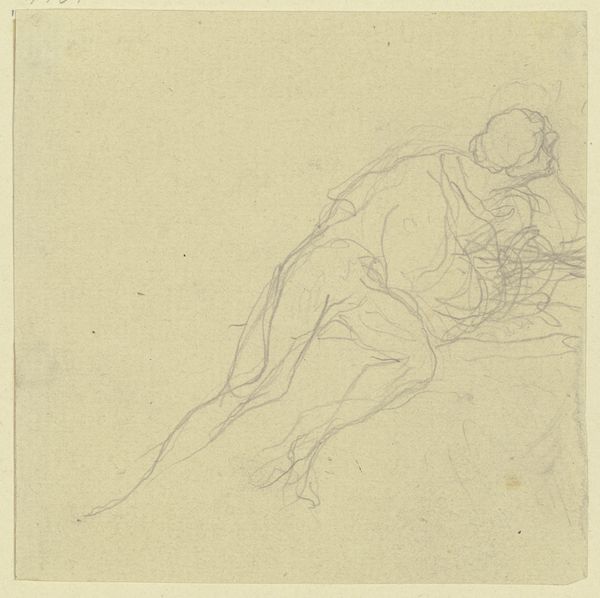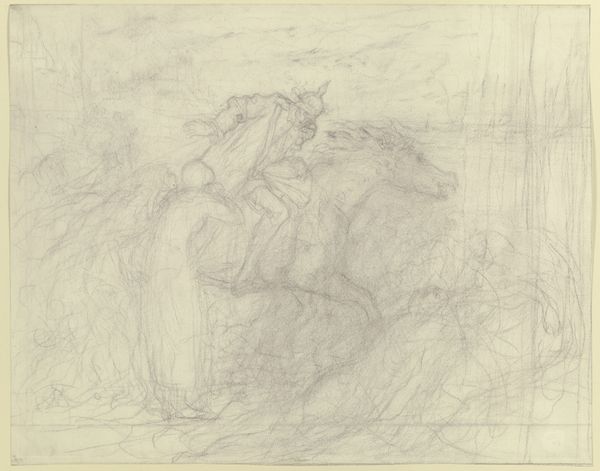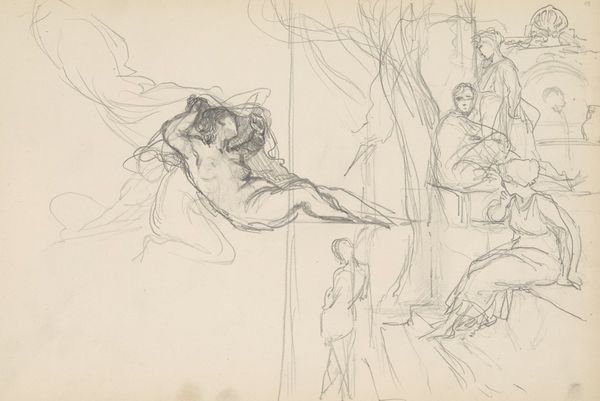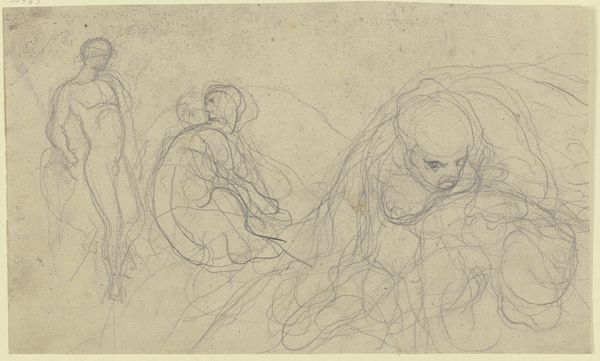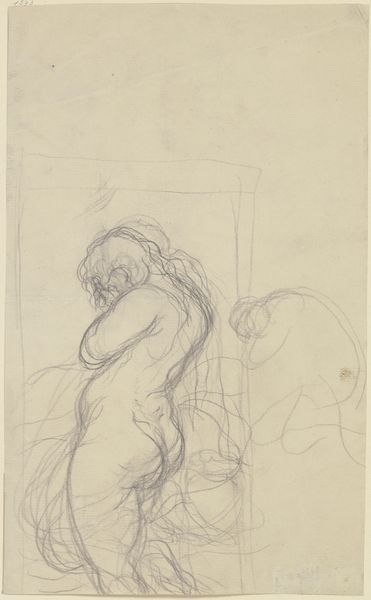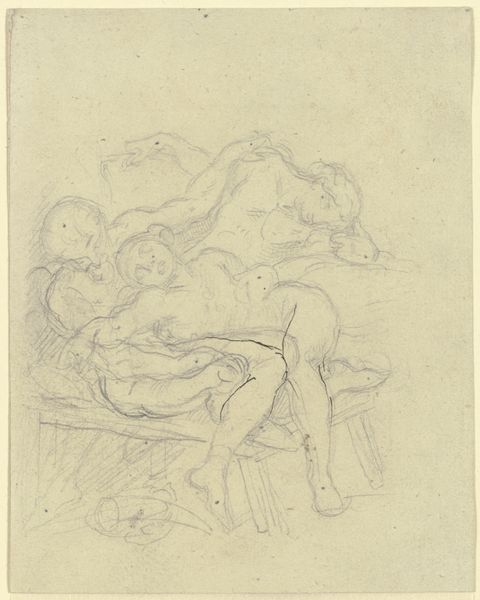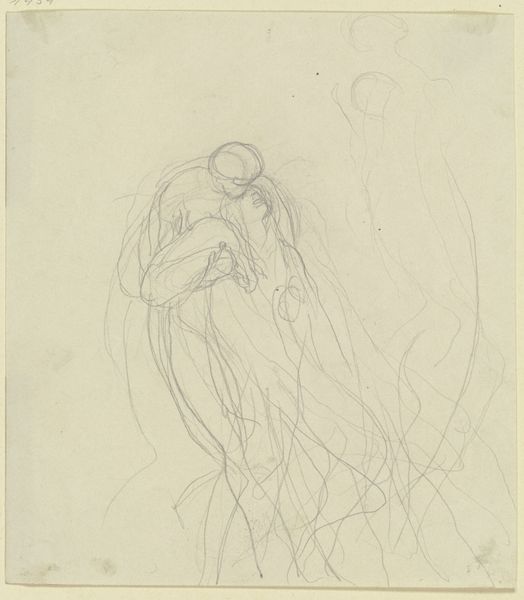
drawing, paper, pencil
#
drawing
#
16_19th-century
#
narrative-art
#
figuration
#
paper
#
german
#
pencil
#
academic-art
Copyright: Public Domain
Victor Müller sketched "Titania and Bottom," likely in the mid-19th century, as a study for a larger painting inspired by Shakespeare's "A Midsummer Night's Dream." Müller, working in a period of burgeoning romanticism, uses this scene to explore themes of desire and the blurring of reality and fantasy. Titania, the fairy queen, falls under a love spell and becomes enamored with Bottom, a weaver who has been magically transformed to have the head of a donkey. This sketch provides a glimpse into how artists of the time engaged with classical literature, filtering it through their own cultural and personal lenses. The scene is charged with underlying tension. Titania's expression is hard to read, and the viewer is left to wonder about the complexities of power and consent within this forced, magical infatuation. Müller's choice to represent this specific moment invites a closer look at how societal expectations of love, beauty, and power intersect. It resonates as both a dream and a disquieting distortion, leaving a haunting echo in the viewer's mind.
Comments
No comments
Be the first to comment and join the conversation on the ultimate creative platform.
